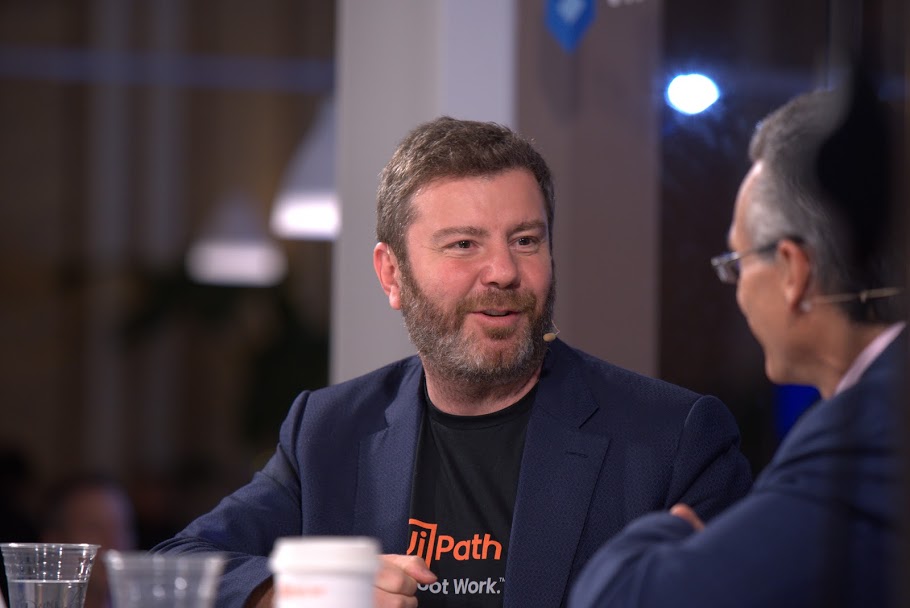 AI
AI
 AI
AI
 AI
AI
Business process automation software company UiPath Inc. is launching a major update to its platform aimed at tackling issues around the sprawling and disparate nature of enterprise applications.
The coming new release, announced at UiPath’s FORWARD IV event today, will enable companies to apply artificial intelligence to every facet of work, help information technology teams scale, maintain and secure automation, and make it easier for developers to build automations.
UiPath is a leader in the robotic process automation market. It sells an RPA platform that’s used by companies to reduce costs and operational errors by automating repetitive work. It relies on AI models that learn how employees perform common tasks in business applications. Then, it creates software robots that can replicate those workflows, thereby reducing the need to perform many of those tasks manually.
The headline feature in the UiPath 2021.10 release is a new Integration Service that’s designed to tackle some of the problems around application sprawl. The average enterprise typically uses more than 175 apps across cloud and on-premises environments, and UiPath says the result of this fragmentation is reduced productivity. So the idea with the UiPath Integration Service is to help companies optimize the applications they’re using through automation of application programming interfaces.
Developers will be able to use APIs to build new automations, similar to how they can already create software robots through user interface automation, UiPath says. As the company notes, API and UI processes often intersect, so it’s a necessary capability for any enterprise that wants to ramp up automation.
UiPath Integration Service will launch on Oct. 25 with more than 70 pre-built connectors expected to be available out-of-the-box by the year’s end.
On the security side, new features around endpoint protection will be available through UiPath’s integration with CrowdStrike Inc.’s Falcon platform. There’s also a new capability called Robot Auto-Healing that regularly assess robot’s runtime environments to determine and remediate any security issues without human intervention, UiPath said. Robot Auto-Healing will be paired with runtime governance to ensure workflows meet corporate security standards.
The new UiPath Automation Suite, meanwhile, is a cloud-native deployment option that enables customers to deploy all UiPath servers in software containers that can run on any kind of computing platform without change. In addition, the company’s software-as-a-service offering UiPath Automation Cloud is being enhanced with cloud services around process mining and test management.
For developers, new features include an updated framework for easier process mining customization, while the new AI Solution Templates and Forms AI (in review) services will make it easier for developers to build AI capabilities into their automations.
The release also provides new Windows and Office experiences. They includes cross-platform support for Linux-based robots that run API automations with low-level resources. Moreover, there’s a new integration between Assistant and UiPath Marketplace that makes it easier to adopt UiPath Marketplace automations.
“UIPath is broadly innovating across its portfolio to help enterprises build RPA-powered, next-generation applications faster,” said analyst Holger Mueller of Constellation Research Inc. “Making UiPath faster and easier to implement will help UiPath customers, as will the closer integration with the their wider application base. Most of all, today’s updates should increase RPA developer velocity, which is a goal of every enterprise.”
UiPath co-founder and Chief Executive Daniel Dines said the new release means UiPath is not just the most comprehensive automation platform of its kind, but also the foundation of automation in the future.
“We’re delivering on making automations easier to build, expanding automation use cases, and ensuring we provide reliability, security, and governance to support enterprise-level, mission-critical processes,” he said. “We are also laying the groundwork for semantic automation, in which robots understand how to use applications without being programmed by humans.”
Support our mission to keep content open and free by engaging with theCUBE community. Join theCUBE’s Alumni Trust Network, where technology leaders connect, share intelligence and create opportunities.
Founded by tech visionaries John Furrier and Dave Vellante, SiliconANGLE Media has built a dynamic ecosystem of industry-leading digital media brands that reach 15+ million elite tech professionals. Our new proprietary theCUBE AI Video Cloud is breaking ground in audience interaction, leveraging theCUBEai.com neural network to help technology companies make data-driven decisions and stay at the forefront of industry conversations.